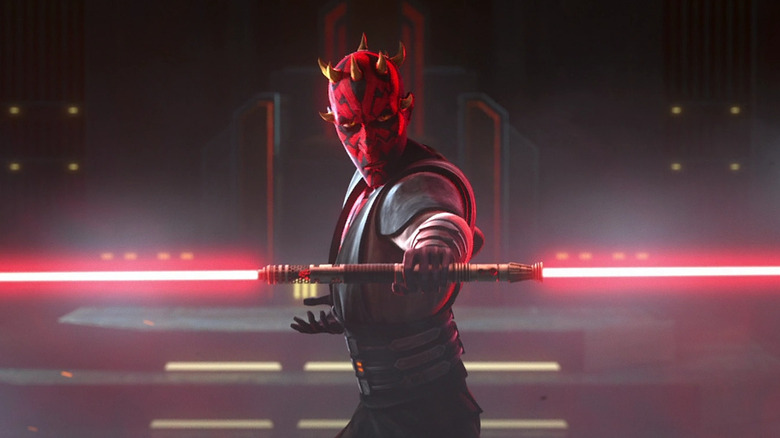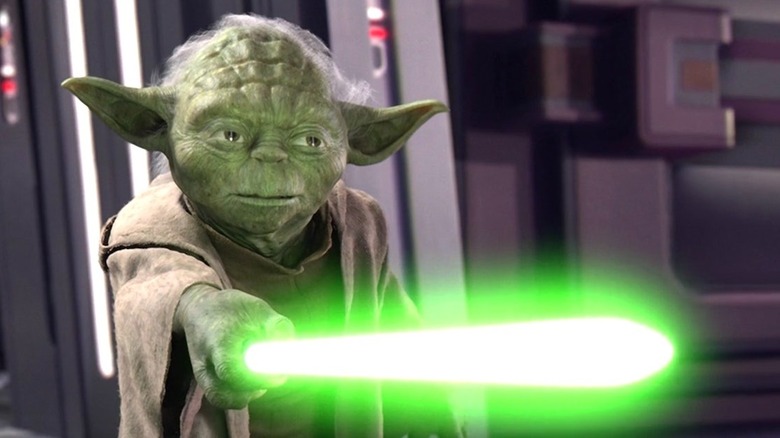Is It Possible To Create A Real Star Wars Lightsaber?
We've all thought about it at one time or another. After all, what "Star Wars" fan didn't recreate the duel on Mustafar with those slide-out plastic lightsabers and not think, "You know, I bet they could make these for real?" At the very least, you hoped it could be true. But is it actually possible? Can we make functional lightsabers in real life?
Disney has certainly been doing its best to fulfill fans' dreams. Earlier in 2023, the company unveiled a new design for Disney World park employees and attractions where the lightsaber blade extends and glows in a manner nearly identical to that seen in the films. The device uses technology similar in principle to a tape measure to achieve the smooth extension effect. But as fun as that is, it's still worlds behind the idea of an actual lightsaber — a weapon of such intense yet focused energy that it can block plasma bolts and cut through steel like butter.
Is it possible to create a real Star Wars lightsaber? Well, no — at least, not currently. Could it ever conceivably be possible? That answer is a bit more complicated. At the very least, real lightsaber technology is still far, far off, as several of the iconic weapon's key qualities defy the laws of physics as we understand them. But a number of experts in the field have suggested that it might not be totally impossible to construct a working lightsaber one day.
The science of lightsabers explained
The canonical mechanics of a lightsaber are actually pretty simple. Every one has a power source, a kyber crystal through which the energy is channeled, and an emitter to focus the blade. In the past, a big hindrance to the development of real lightsabers was that it was impossible to contain an energy source that powerful within such a small hilt, however, that might not be a problem forever.
"Small accelerators that take electrons to 99.999% of the speed of light have already been built," UC Berkeley physics professor Richard Muller shared in a Quora post. He included a picture of one such device that "is only 8-inches long, and it could be made to fit into the handle of a lightsaber." However, Muller also explained that such a device wouldn't really be mirroring the behavior of a lightsaber.
"The one aspect of lightsabers that seems infeasible is the concept of its acting as a solid physical rod or saber that can 'hit' or 'strike' an opponent," University of South Florida physics professor emeritus Dennis K. Killinger told Gizmodo in 2021. "But if you take two flashlight beams and cross one beam with the other beam, there is no sound or force experienced by one light beam on the other. This is because photons have no mass, which means that a laser or optical beam has no mass." Still, there's hope. Killinger and several other scientists have suggested that a more accurate lightsaber blade could be constructed out of plasma and channeled through an electromagnetic coil. The technology necessary to power such a device is still beyond our grasp, but maybe one day we'll be able to create a good enough facsimile that no one will be able to tell the difference.

